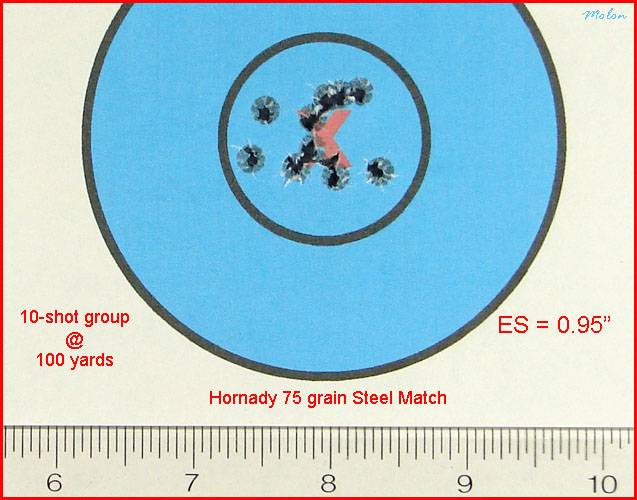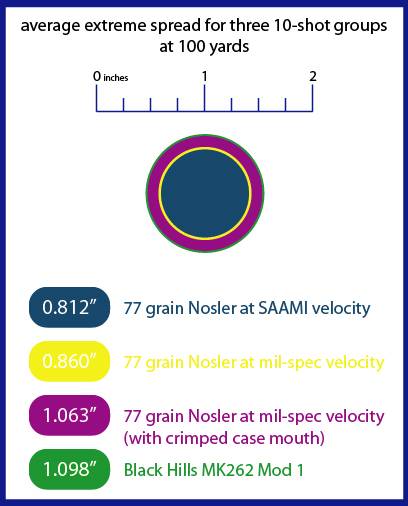Reloading For The AR-15: Hornady 75 Grain BTHP
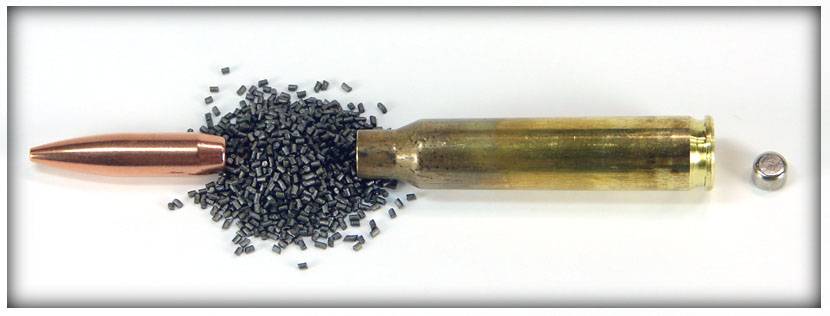
Hornady produces three different versions of their 75 grain open-tip-match bullet in 22 caliber (0.224”). For this article, we’ll be looking at the projectile that is colloquially referred to as the “T1”.
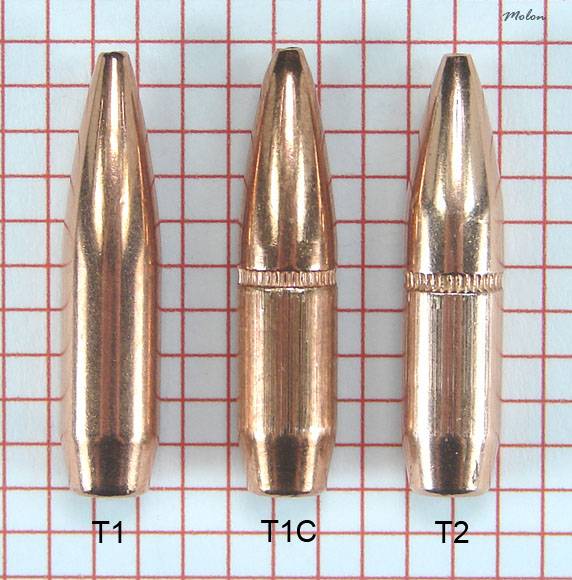
The T1 is available as a reloading component, with a product number of #2279 for the 100 count boxes. It’s also available in 600 and 4000 count boxes.
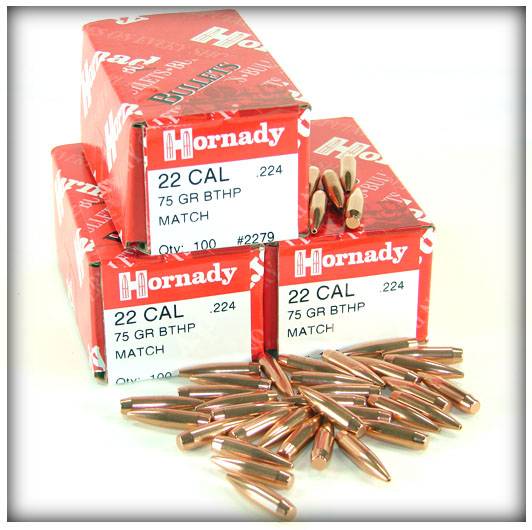
I use the Hornady 75 grain BTHP bullet to load match-grade hand-loads for my semi-automatic AR-15s chambered in 5.56mm/223 Remington. According to Ballistic Performance of Rifle Bullets by Bryan Litz, the Hornady 75 grain BTHP has an average G1 ballistic coefficient of 0.356 and an average G7 ballistic coefficient of 0.183.
The lot of T1 projectiles used for this article have a nominal length of 0.988” and I load them to a nominal COAL of 2.245”. When fired from a Colt SOCOM barrel with a 5.56mm NATO chamber, this COAL will create a jump to the lands of 178 thousandths of an inch. When fired from a Larue Stealth barrel with a 223 Wylde chamber, this COAL will create a jump to the lands of 115 thousandths of an inch and when fired from a Krieger barrel with a 223 Remington chamber, this COAL will create a jump to the lands of 78 thousandths of an inch.
The jump to the lands figures stated above where obtained using a Sinclair bullet seating depth gauge and a Forster 223 Remington 1.4636” head-space gauge. These figures are contingent upon a variety of variables, such as the particular chamber reamer that was used for your barrel, the number of rounds that have been fired through your barrel when the measurement is obtained, the particular lot of bullets used and whether you use a virgin case, a fired case, a resized case or a head-space gauge to obtain this measurement.
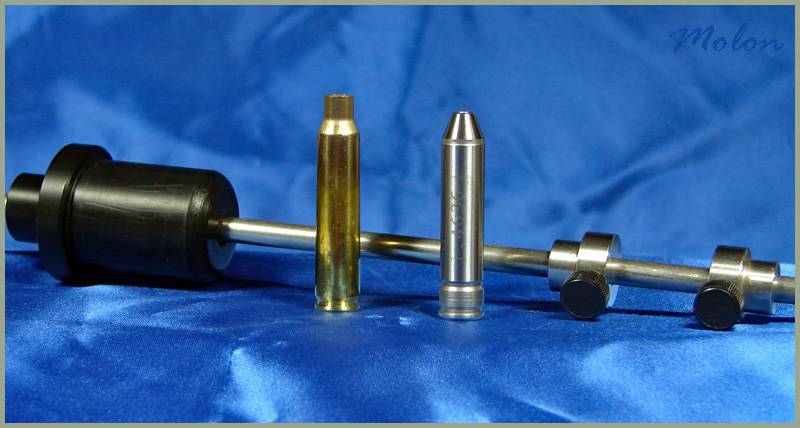
WARNING!
Reloading is an inherently dangerous activity. The information provided here is for educational purposes only. It is not intended to be used for the actual loading of ammunition by the reader. No warranty, guarantee or assurance that these loads are safe is stated, suggested or implied nor should any be inferred. Usage of this information for the actual loading of ammunition may result in malfunctions, damage and destruction of property and grave injury or death to beings human in nature or otherwise. Don't even view this information in the presence of children or small animals.
For this hand-load of the Hornady 75 grain BTHP bullet, I use virgin Lake City brass that has been weight-sorted, match-prepped and neck-sized. The cases are primed with Federal GM205M primers and charged with VihtaVuori N140 powder and as mentioned above, the T1 projectile is seated to a COAL of 2.245”. This process is conducted in a semi-progressive manner on a Dillon XL-650 press using a Pact Digital electronic powder dispenser and scale to dispense a powder charge of 24.1 grains of the VihtaVuori N140.
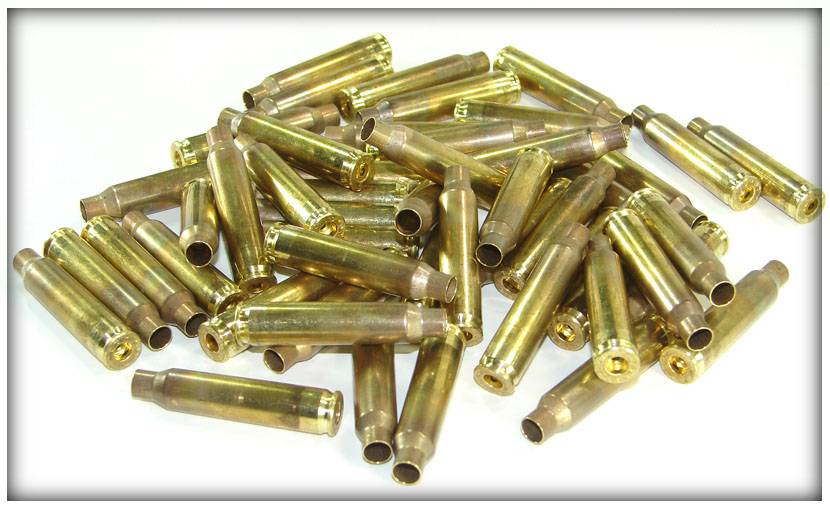
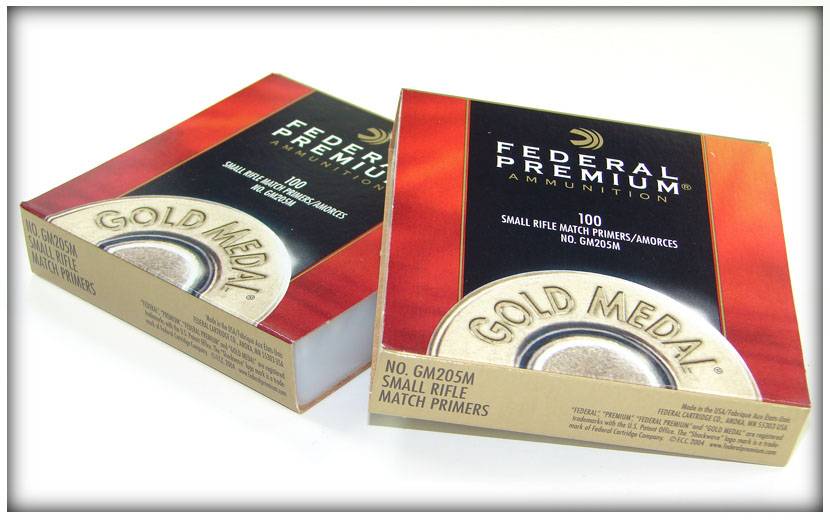
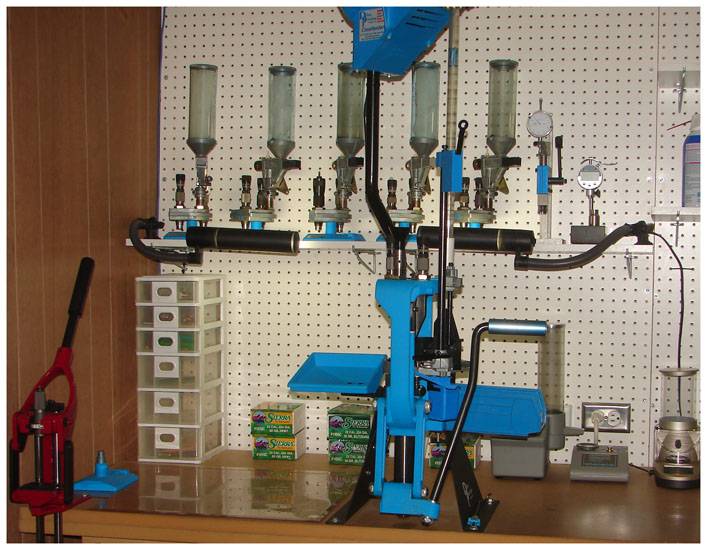
When chronographed from a 20” Colt A2 barrel, a 10-shot string of this hand-load fired over an Oehler 35P produced a muzzle velocity of 2638 FPS with a standard deviation of 4 FPS and a coefficient of variation of 0.15%. (The muzzle velocity was calculated from the instrumental velocity using Oehler Ballistic Explorer.) A 10-shot group fired from one of my Krieger barreled AR-15s, at distance of 100 yards using my bench-rest set-up, had an extreme spread of 0.526 MOA.
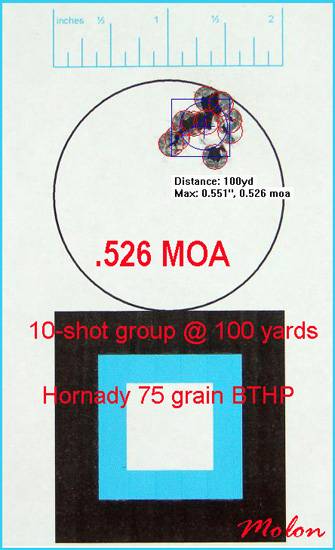
No canines were harmed during the testing of this ammunition.
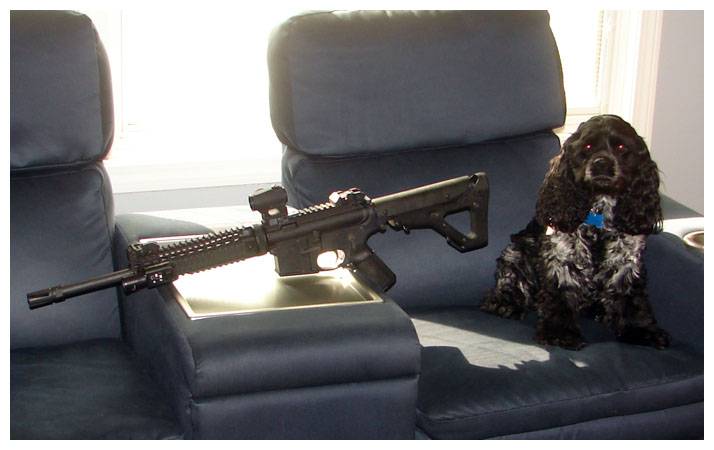

....

Hornady produces three different versions of their 75 grain open-tip-match bullet in 22 caliber (0.224”). For this article, we’ll be looking at the projectile that is colloquially referred to as the “T1”.

The T1 is available as a reloading component, with a product number of #2279 for the 100 count boxes. It’s also available in 600 and 4000 count boxes.

I use the Hornady 75 grain BTHP bullet to load match-grade hand-loads for my semi-automatic AR-15s chambered in 5.56mm/223 Remington. According to Ballistic Performance of Rifle Bullets by Bryan Litz, the Hornady 75 grain BTHP has an average G1 ballistic coefficient of 0.356 and an average G7 ballistic coefficient of 0.183.
The lot of T1 projectiles used for this article have a nominal length of 0.988” and I load them to a nominal COAL of 2.245”. When fired from a Colt SOCOM barrel with a 5.56mm NATO chamber, this COAL will create a jump to the lands of 178 thousandths of an inch. When fired from a Larue Stealth barrel with a 223 Wylde chamber, this COAL will create a jump to the lands of 115 thousandths of an inch and when fired from a Krieger barrel with a 223 Remington chamber, this COAL will create a jump to the lands of 78 thousandths of an inch.
The jump to the lands figures stated above where obtained using a Sinclair bullet seating depth gauge and a Forster 223 Remington 1.4636” head-space gauge. These figures are contingent upon a variety of variables, such as the particular chamber reamer that was used for your barrel, the number of rounds that have been fired through your barrel when the measurement is obtained, the particular lot of bullets used and whether you use a virgin case, a fired case, a resized case or a head-space gauge to obtain this measurement.

WARNING!
Reloading is an inherently dangerous activity. The information provided here is for educational purposes only. It is not intended to be used for the actual loading of ammunition by the reader. No warranty, guarantee or assurance that these loads are safe is stated, suggested or implied nor should any be inferred. Usage of this information for the actual loading of ammunition may result in malfunctions, damage and destruction of property and grave injury or death to beings human in nature or otherwise. Don't even view this information in the presence of children or small animals.
For this hand-load of the Hornady 75 grain BTHP bullet, I use virgin Lake City brass that has been weight-sorted, match-prepped and neck-sized. The cases are primed with Federal GM205M primers and charged with VihtaVuori N140 powder and as mentioned above, the T1 projectile is seated to a COAL of 2.245”. This process is conducted in a semi-progressive manner on a Dillon XL-650 press using a Pact Digital electronic powder dispenser and scale to dispense a powder charge of 24.1 grains of the VihtaVuori N140.



When chronographed from a 20” Colt A2 barrel, a 10-shot string of this hand-load fired over an Oehler 35P produced a muzzle velocity of 2638 FPS with a standard deviation of 4 FPS and a coefficient of variation of 0.15%. (The muzzle velocity was calculated from the instrumental velocity using Oehler Ballistic Explorer.) A 10-shot group fired from one of my Krieger barreled AR-15s, at distance of 100 yards using my bench-rest set-up, had an extreme spread of 0.526 MOA.

No canines were harmed during the testing of this ammunition.


....
Last edited:


